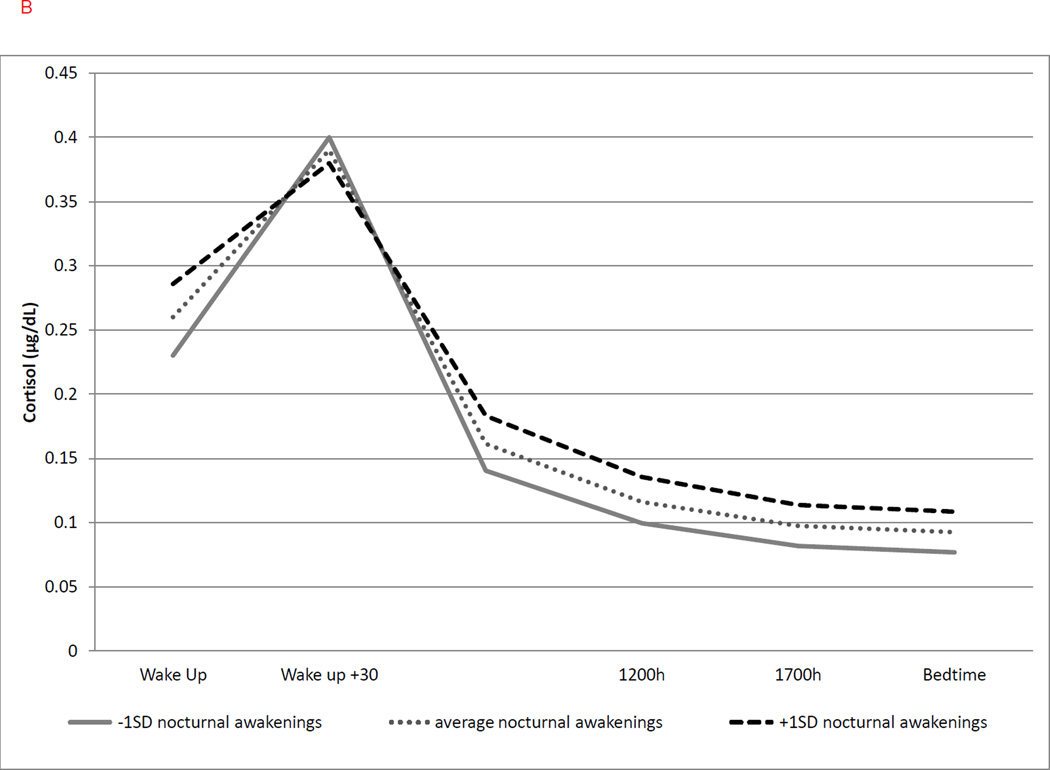Figure 2.
(a–b). Graphical representation of the effects of duration of prior-day nap duration and prior-night nocturnal awakenings on cortisol diurnal rhythm. These effects are modeled either as the average value as well as ±1SD of the sample mean values. Graphs are estimated by the hierarchical linear models from the time of the awakening (Wake Up) through bedtime.
(a) Longer prior-day nap duration was associated with lower cortisol at awakening (b = −0.184, p = .004), greater CAR (b = 0.042, p = .050), steeper linear (b = −0.035, p = .003) and flatter quadratic slopes (b= −0.0017, p < .001). Solid line represents nap duration at −1SD; dotted line represents average nap duration; dashed line represents nap duration at +1SD.
(b) Greater duration of nocturnal awakenings was associated with a greater cortisol at awakening only (b = 0.088, p = .043) and not CAR or linear/quadratic slope. Solid line represents duration of nocturnal awakenings at −1SD; dotted line represents average duration of nocturnal awakenings; duration; dashed line represents duration of nocturnal awakenings at +1 SD.


